25 vintages of Château Haut-Bailly from magnum
Posted on March 9, 2024

By Panos Kakaviatos for wine-chronicles
9 March 2024
You know a Bordeaux producer is worthy when their second wine at nearly 20 years old is selected among the top in a blind tasting that included three Ridge Monte Bellos (1996, 2004, 2007), two Château Pontet Canets (2001, 2010), Château Brane Cantenac 1986, Château Beychevelle 1964, and Château Rauzan Ségla 2005.
In a blind tasting of eleven “Bordeaux blend” wines – including wines that could be from around the world, so long as they have Bordeaux grapes – La Parde de Haut Bailly 2006, the second wine of Château Haut Bailly, garnered five votes from six tasters as one of their top three favorites: Of course, before uncovering the labels. The tasting for wine experts working either as educators or in the wine trade took place on 25 February this year at the members-only Wine Bank in Frankfurt, Germany.
The tasting reminded me of just how great Château Haut Bailly in the Graves region of Bordeaux is. A Cru Classé (classified growth) since Graves wines were ranked some 70 years ago, it later became part of the northern Graves appellation Pessac-Léognan, established in 1987, and which includes all Graves’ classified estates. The appellation is so named because these top estates are concentrated around the two towns of Pessac, home of Château Haut Brion, among others, and Léognan, close to where Haut Bailly is located, among others. Read More
A focus on Léoville Poyferré – and more – in Boston
Posted on January 30, 2024
By Panos Kakaviatos for wine-chronicles.com
30 January 2024
Many thanks to Marc Bouffard aka Englishmans Claret – a must-follow on Instagram for anyone who appreciates fine wine – for a wonderful dinner and lunch at Boston’s Somerset Club, featuring the wines of the family of Sara Lecompte Cuvelier, who own the storied second growth in St. Julien, Château Léoville Poyferré along with Château Le Crock, in Saint Estèphe, among other properties.
In less than 24 hours, I had the great pleasure to meet new wine loving friends in a lovely setting and exceptional cuisine by celebrated American chef Michael Shannon to match no less than two verticals of Château Léoville Poyferré, including 1982, 2000, 2003, 2005, 2010 and 2016, among others. And thanks to Marc for sourcing a surprisingly lively 1942! It was also great to see again Ryan Nagle, aka romanee_ryan on Instagram, who is also very passionate about wine, and you should follow him, too.
Marc is drafting a book on the wines of Saint Julien, having visited the estates of this appellation, and he has tasted through vintages as old as 1900, with almost daily updates of tastings on his Instagram, which has nearly 29,000 followers and counting.
As a published wine writer for over 25 years, I appreciate Marc’s genuine wine passion, tasting acumen, and sincere geniality. For the two tasting events, he gathered people from a variety of backgrounds who share a common fine wine interest – without an ounce of pretentiousness.
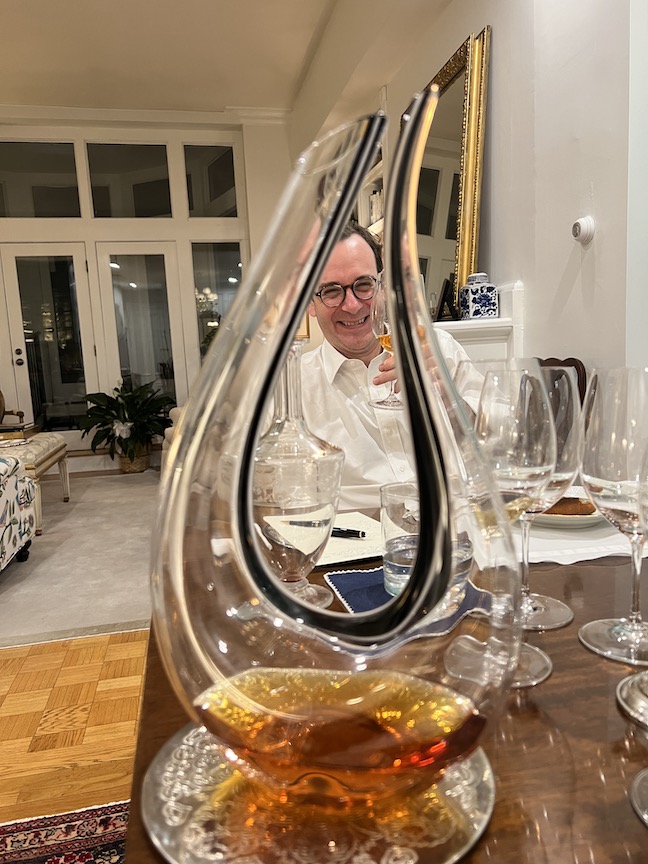
Marc Bouffard, aka englishmans_claret on Instagram, is working on a book on Saint Julien, but here we are enjoying a fine Yquem on a previous occasion in Boston
The first vertical over dinner on January 23rd began with a tasty grower’s Champagne – François Secondé Grand Cru Brut NV Sillery Champagne – to match pan-seared sea scallops with pear parsnip purée, pomegranate reduction and petite chicory. The bubbly proved smooth and vibrant, with pleasing petillance texture. I liked the crisp ripe apple, lemon, and floral aspects as well as telltale brioche. Read More
2020 Bordeaux: bottled classic
Posted on October 21, 2023

By Panos Kakaviatos for wine-chronicles.com
21 October 2023
Dear Readers,
It has been a while, but after buying a new apartment with renovation work, prioritizing articles in magazines for which I am paid, and work from my day job at the Council of Europe, I took a hiatus from this website. Also because WordPress sucks. Seriously, there is always a bug, so I am looking into other website options.
But here we go: some detailed reviews of the 2020 vintage from Bordeaux in bottle, which I feel overall is the most classical (recent) vintage since 2016, in a modern context of course. We are not back in the 1980s. But 2020 has a less solar feel than 2019, 2018 or 2022 for that matter. Do not buy the hype about 2021 being a return to classics: that is a euphemism for an average vintage, which was too often too expensive en primeur!
Having been in Bordeaux to taste the 2022s from barrel, with even crazier opening prices for many brands, readers would be wise to compare opening prices for 2022 with 2020 in bottle – and not 2021, which is not nearly at the level of either vintage. Speaking of which, I experienced a comparison of several recent vintages at Château Phélan Ségur in Saint Estèphe. While 2018 can captivate for extreme ripeness (and better balance than 2015), 2020 is overall more refined, subtle and elegant. As you have already heard from all them official critics and promoters, many 2022s are indeed extraordinary, as tasted from barrel, with some comparing the vintage to 1947 or 1949 in terms of number of days between April and September over 30°C. But who knows in the long run? Club Oenologique published my initial summary on the 2022 from barrel here.
But the relative quiet power of 2020 wins for seekers of Bordeaux classicism in recent vintages. In a recent 20-vintage vertical at Clos Fourtet in Saint Emilion, to take but one example, I found 2020 more classical than either 2022, 2019, 2018. Indeed it comes close to the sheer excellence of the 2016, to which I gave a rare 100 point score! Premium subscribers to Decanter can read about it, published on 6 October, here. And 2020 classicism is not limited to any specific region: When I took part in a tasting this past May in Washington D.C., Emeline Borie of the excellent Château Grand Puy Lacoste in Pauillac told me that among the 2018, 2019 and 2020 vintages, she prefers the latter as more classical, too. Furthemore, all the 2020s I tasted at that event (linked to the Heart’s Delight) were at least very good to rather sublime, like the Château Léoville Poyferré.
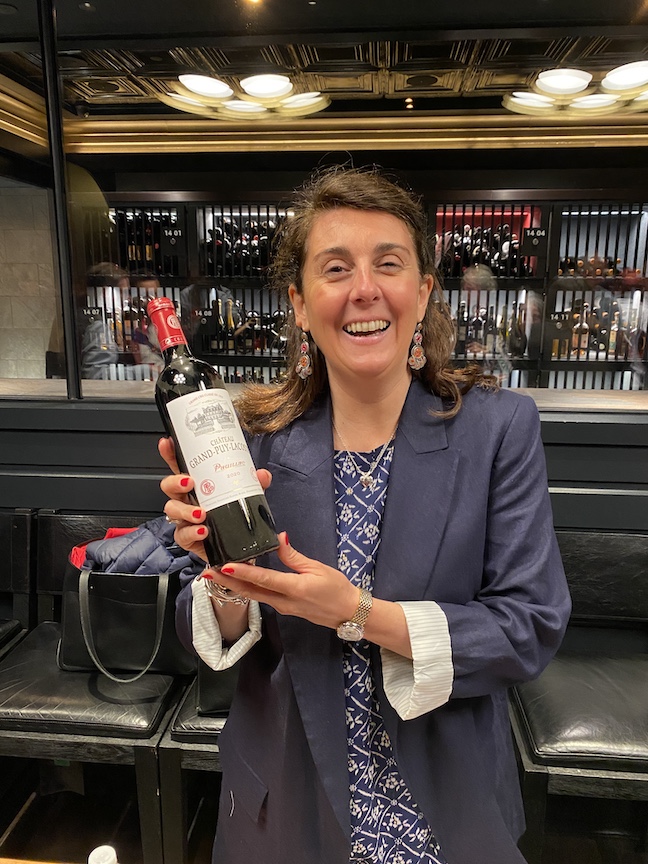
Emeline Borie of Château Grand Puy Lacoste at a Heart’s Delight tasting at the WineLAIR in the Ritz Carlton Hotel
Mouton Rothschild: reaching back 40 years
Posted on January 29, 2023
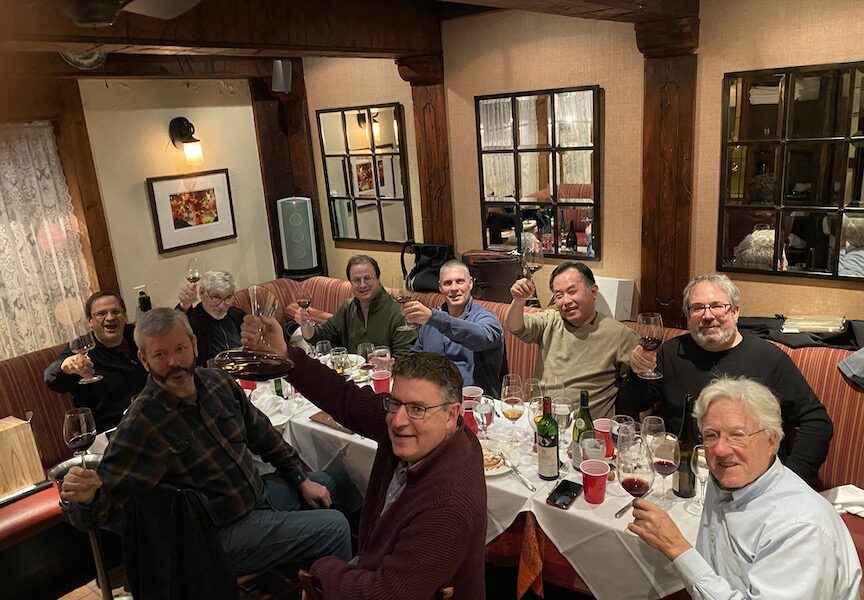
And some talk of “first growth bias”
By Panos Kakaviatos for wine-chronicles.com
A wonderful evening at the cozy and elegant French restaurant La Chaumière in Georgetown in Washington D.C. It was great to catch up with wine friends most of whom I hadn’t seen since Covid struck. We chose as theme the venerable First Growth in Pauillac, Château Mouton Rothschild, each bringing a bottle. We also brought dry whites, Champagnes and late harvest wines from Sauternes.
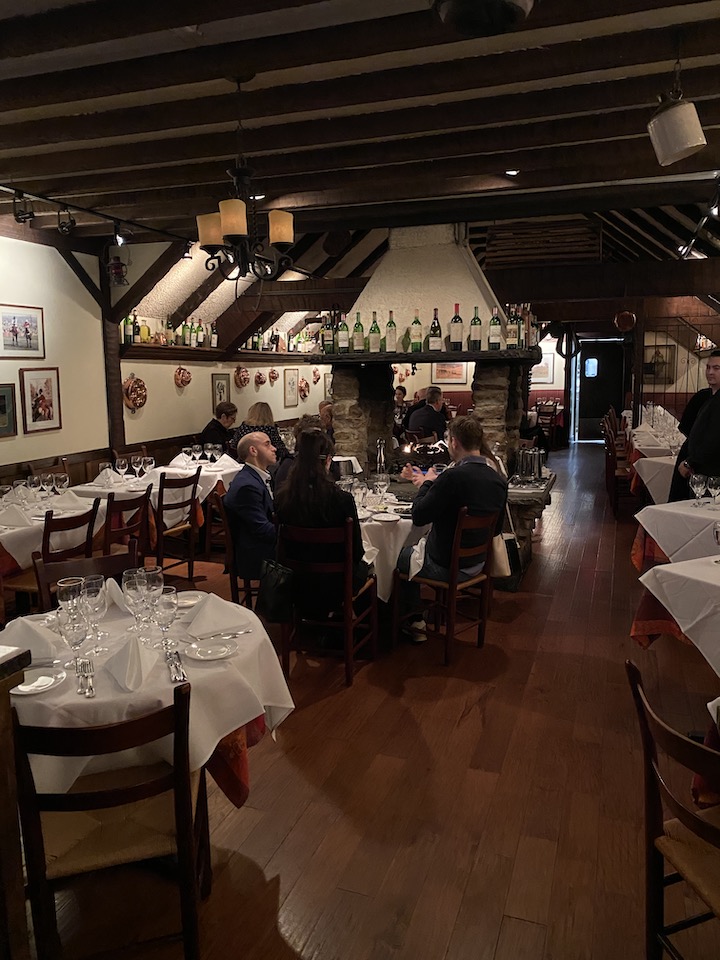
French authentic and cosy at La Chaumière
Rather than be seated in the main restaurant area, we enjoyed a private space near the entrance. The service was as excellent as the food, which reminded me of fine bistro fare. And quite authentic. Clients could order for example the ris de veau (sauteed veal sweetbreads), which is not always listed in French restaurants in the US. How about tripes? I am not a fan, but for tripe lovers, they come with carrots braised in Calvados. Other meaty options include the Boudin Blanc – a house chicken and pork sausage in Madeira sauce with caramelized apples. Sounds nice for a cold winter evening. Some of our party opted for the venison medallions which looked good. For my part, thinking of great Pauillac wine, the choice fell between duck breast and steak au poivre, and I opted for the latter, as it was a seared center cut aged New York strip steak in a savory peppercorn sauce.
Hungry? Well, there is so much more, including excellent charcuterie starters, roasted red beets, and the starter I chose: escargots soaked in garlic and parsley. Not ideal for Mouton, I enjoyed them before, over quality Champagnes. Lovers of fish and seafood find plenty of happiness here, as well, with dishes ranging from grilled center cut Atlantic swordfish and sauteed sea scallops to fresh boned rainbow trout. It is more challenging for vegetarians, but try the aforementioned roasted red beets with herbed Vermont goat cheese or an excellent winter salad with arugula, baby red oak, dried cranberries, red onions and pistachio nuts among other appealing ingredients.
Many thanks to Ken Brown for arranging the venue, which I highly recommend again for both service and quality of food.
Champagnes
As to the wines, we had two corked bottles, alas: the Philipponnat Clos de Goisses 1996 and the Mouton Rothschild 1986. Two great wines in great vintages, alas! But no worries, as many shined bright. Let’s start with a somewhat underrated Champagne that brings you more bang for your buck, albeit Champagne prices make our bucks less powerful in most cases anyway.
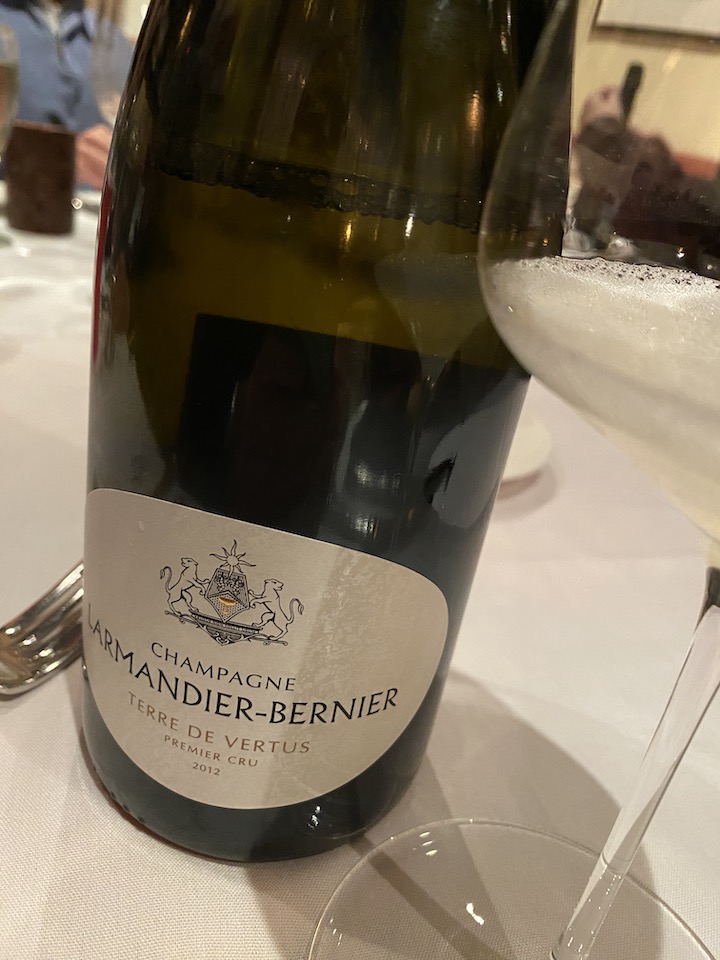
I once visited Larmandier-Bernier, and the producers are serious about making great wines. The Premier Cru Terre de Vertus 2012 Blanc de Blancs (vinified separately since 1995 from a a parcel named “Les Barillers”, situated mid-slope in Vertus) that we enjoyed is not only certified organic, but it sings with focus and precision, with bright fruit and zing, yet also palate filling. Sometimes an Extra Brut zero dosage Champagne can come across too steely with other producers, but not so here. And not only that but you also get a low sugar quality fizz!
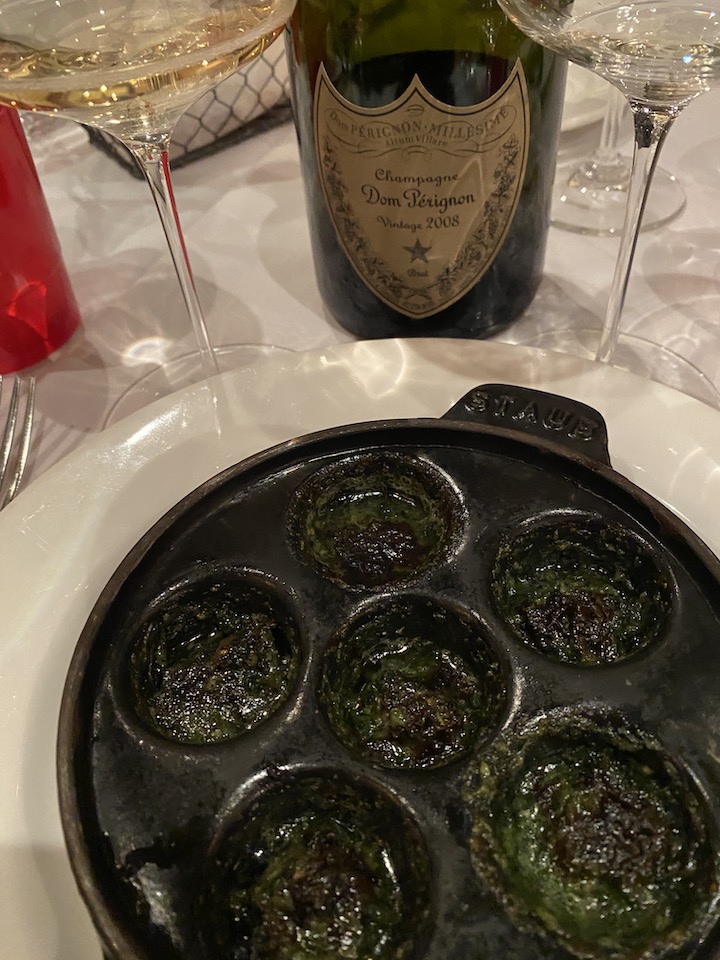
Vintage Dom and escargot works just fine for me
We then tried an excellent Dom Perignon 2008, which has become already a legendary vintage, and with legendary pricing – even if prices have become even more legendary since the 2012 vintage. Who knows how much is produced? Certainly, LVMH won’t reveal the secret, so bottle variation happens. This happened to be a really good bottle, even if some noted a bit of funk in the nose, but the palate was gorgeous with vivid expressions of toast and brioche and lime/lemon freshness delivered in a smooth, almost caressing texture. The bubbles? Very fine!
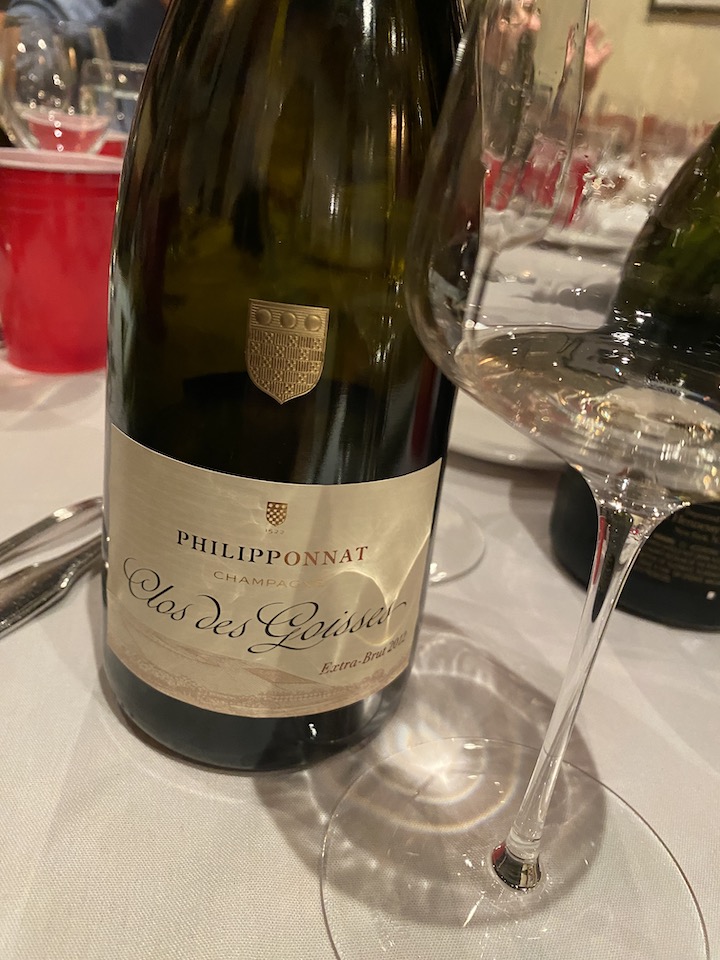
The Philipponnat Clos de Goisses 2012 was opened too cold (I brought it from a very cold cellar), but once in glass for a while, what sheer opulence and vinosity! Clearly the most “vinous” among the Champagnes we enjoyed, from an exemplary vintage, as owner Charles Philipponnat advised me to buy it rather than the 2011, which I had tasted while visiting his estate. An Extra Brut, albeit with just under 5 grams per liter dosage, the bright acidity balances the opulence, with notes ranging from kirsch to honey, from white flower to lemon and grapefruit. The blend is typically two-thirds Pinot Noir and the rest Chardonnay. Long finish.
Dry Whites

Crisp, cool, clean and precise: tasting youthful for a 2010
We then enjoyed three dry whites, two from Burgundy and the other from the northern Rhone. My overall favorite was the William Fèvre Grand Cru Les Preuses Chablis 2010, which seemed at first rather reductive in aspect, but time in glass yielded stony, flinty charm coupled with green apple and white flower bouquet aromas. The palate was not as sumptuous as the other two wines, but the most precise and frankly the most interesting to me… but of course it comes down to pairing. I immediately thought of quality raw oysters as a classic marriage, but this would also grace lobster. Read More
Nearly 40 vintages of Château Pichon Longueville Baron
Posted on October 14, 2022
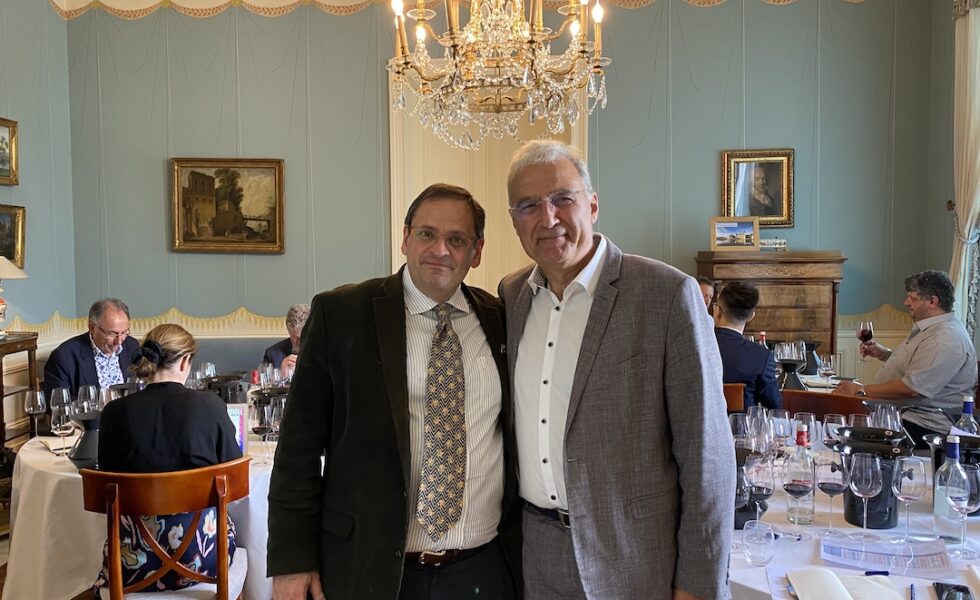
In honor of Jean-René Matignon
By Panos Kakaviatos for wine-chronicles.com
14 October 2022
I recall the disappointment in Jean-René Matignon’s face as rain started falling towards the end of the 2006 harvest. “This could have been as good as 2005,” he said regretfully. Some 16 years later, tasting the 2006 at Château Pichon Longueville Baron in a vertical of 37 vintages, the wine tasted as one might have expected: not as good as the 2005, but pretty good, proving the point that excellent terroir from an estate like Château Pichon Longueville Baron can shine over time, even in a less than “great” vintage.
On May 24th this year, the estate invited me to join a special Au Revoir tasting and lunch featuring vintages spanning Jean-René’s career with the château. We also enjoyed magnums of 1959 and 1961 over lunch (of course pre-dating Jean-René’s arrival at Pichon Baron).
Despite some off bottles, the global high quality experienced testifies not only to the excellence of the terroir, but also to the talent of Jean-René and his team.
On two occasions earlier this century, Jean-René joined me for “winemaker dinners” that I had organized in German cities and in Washington D.C., where participants appreciated his affability and informative feedback when they posed questions. In my experience as a journalist and wine events organizer, I came to admire Jean-René as both a professional and kind man, who exudes passion and love for wine.
Over his tenure, he and his team blazed a trail to make powerful Pauillac wine with refinement, increasing the amount of Cabernet Sauvignon in the blends, reducing the percentage of the grand vin while increasing the new oak. Of 72 hectares owned by the estate today, the first wine is made primarily from older vines growing on a prized 40-hectare plateau of gravel beds with poor soils that force vines to go deep into the ground. But that was not the case in the 1990s.
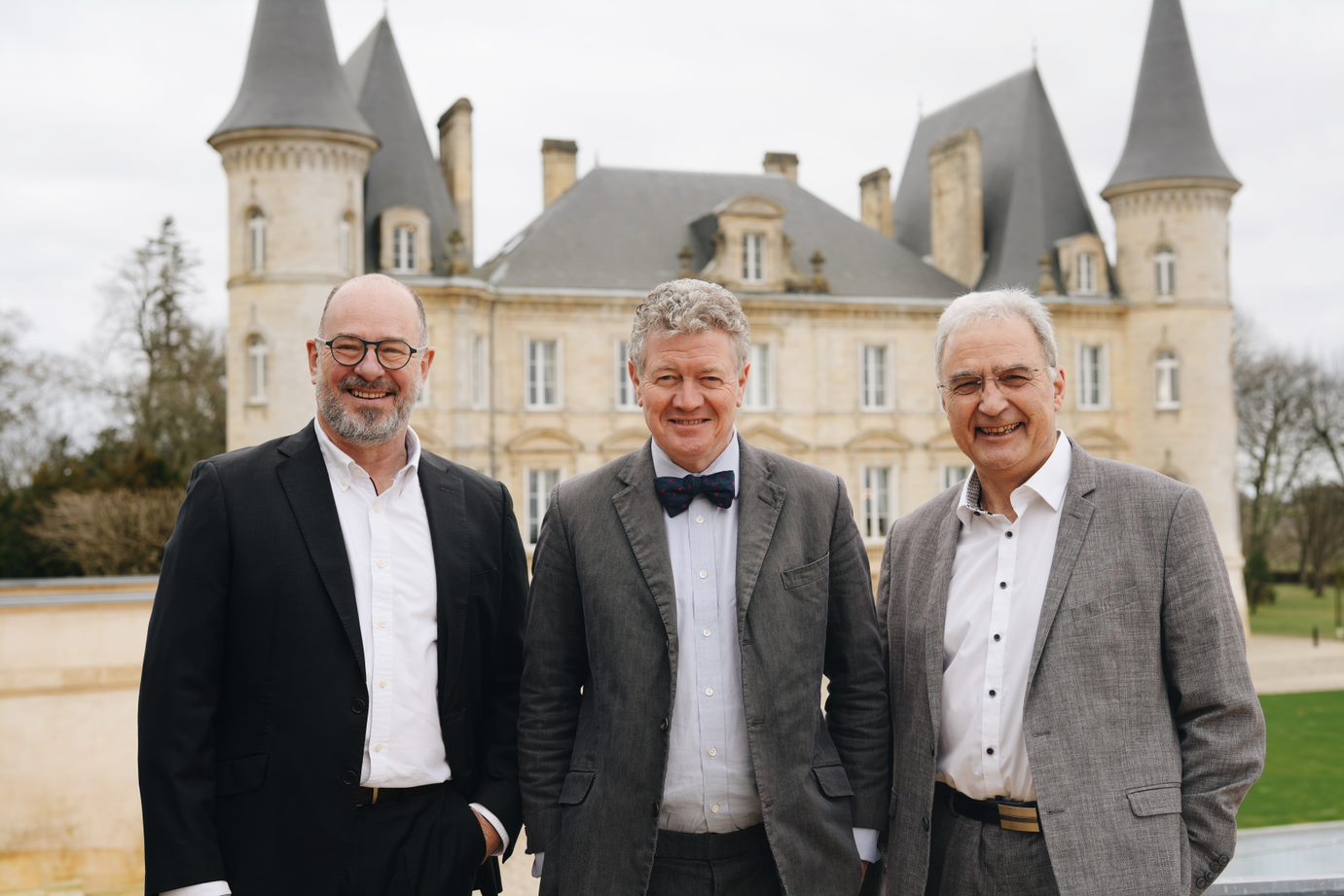
Left to right at the estate: Pierre Montégut, who has taken over from Matignon, Christian Seely and Jean-René / ©Château Pichon Baron
“When I arrived, we [along with Jean-René] reached a strategic decision to make considerably less Pichon Baron than before,” explained Christian Seely, managing director at AXA Millésimes, which owns the estate. Read More
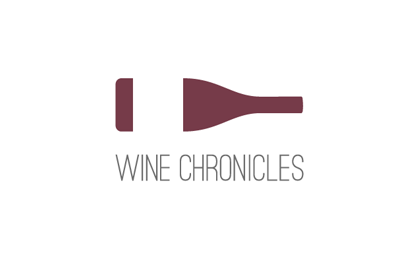 Wine Chronicles
Wine Chronicles
Recent Comments